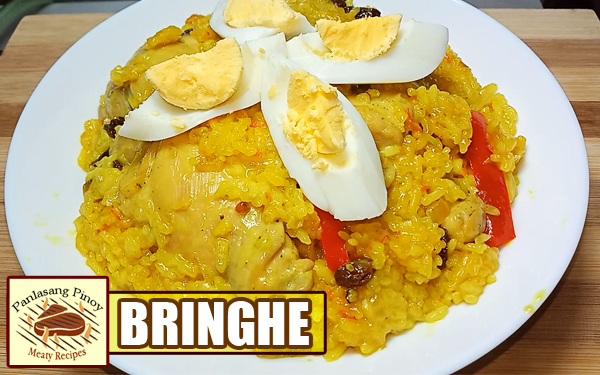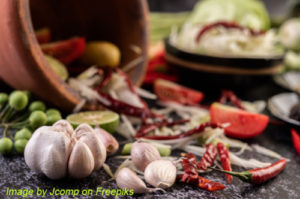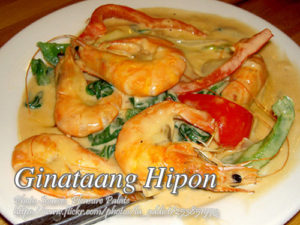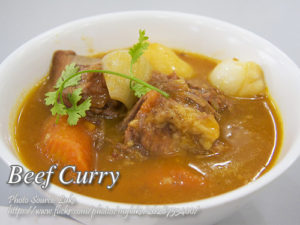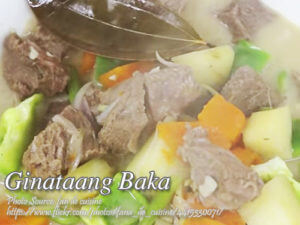Bringhe is a Filipino version of paella and particularly it is a a Kapampangan paella since brighe or bringhi is a Kapampangan word. Unlike the paella, It is composed of glutinous rice, meats like chicken or pork and the liquid used is coconut milk. Paella on the other hand mostly use rice (not glutinous), seafoods and chorizos and a lot of herbs and spices but some are incorporating chorizos in this rice dish too. Anyway the important thing is to enjoy this dish and you can add other ingredients that best suits your taste and preference to the basic recipe.
A Kapampangan Culinary Gem
Bringhe, often dubbed as the Kapampangan paella, is a Filipino culinary masterpiece that brings together the rich flavors of glutinous rice, savory meats, and the creamy goodness of coconut milk. Unlike its Spanish cousin, paella, this rice dish boasts a unique blend of ingredients that make it a delightful experience for your taste buds. In this recipe post, we’ll explore the intricacies of crafting this delectable dish, allowing you to savor the authentic flavors in the comfort of your kitchen.
Prepping the Canvas: Wilted Banana Leaves
The first step in bringing it to life is to prepare the canvas for this culinary masterpiece. Heat the banana leaves on the stove until they are gently wilted. This process enhances their pliability and imparts a subtle aroma to the dish, setting the stage for the flavors to unfold.
Marinating Magic: Infusing Flavor into Chicken Fillet
In a culinary symphony, the chicken fillet takes center stage. Elevate its taste by marinating it with a dash of salt and pepper, ensuring every fiber of the meat is infused with flavor. This step lays the foundation for a succulent and savory element in your dish.
Rice Ritual: Soaking and Savoring Glutinous Goodness
Glutinous rice forms the heart of bringhe, providing a unique texture and taste. Begin by soaking the glutinous rice in water for a brief period, allowing it to absorb moisture. Wash and drain the rice, setting the stage for a delightful interplay of flavors and textures in your finished dish.
Sizzling Symphony: Crafting the Chicken Fillet
With the marinated chicken fillet ready, embark on a sizzling adventure in the kitchen. Heat cooking oil in a wok and let the chicken fillet dance in the pan until it achieves a golden brown hue. This step seals in the flavors, adding a tantalizing layer to your dish.
Aromas Unleashed: Sauteing Garlic, Onion, and Turmeric
The aromatic trio of garlic, onion, and turmeric takes the spotlight, infusing the dish with depth and character. Saute these ingredients in the residual oil, allowing their essences to meld and create a symphony of flavors that will linger in every bite.
Umami Unleashed: Balancing Flavors with Patis and Bouillon Cube
To achieve the perfect balance of flavors, introduce patis to the sauteed mixture. Let it simmer, unlocking a depth of umami that elevates your dish. Enhance the savory goodness by adding a bouillon cube, allowing its rich essence to permeate the dish.
Textural Tango: Adding Bell Peppers and Raisins
The introduction of bell peppers and raisins adds a delightful textural and flavor contrast to your binghe. Saute these vibrant ingredients, creating a harmonious blend that tantalizes both the eyes and taste buds.
Rice Reunion: Blending Glutinous Rice and Chicken Fillet
As the stage is set, unite the soaked glutinous rice and the succulent chicken fillet in the wok. Stir with precision, ensuring every grain of rice is coated in the symphony of flavors orchestrated by the ingredients.
Liquid Alchemy: Transforming with Coconut Milk
The secret elixir of it lies in the creamy embrace of coconut milk. Pour this liquid gold into the wok, stirring until the rice absorbs the essence, transforming the mixture into a luscious, slightly thick concoction that promises a flavor explosion with every spoonful.
Banana Leaf Elegance: Assembling the Masterpiece
In a culinary ballet, layer a pot with the wilted banana leaves. Carefully transfer the rice mixture into the pot, creating a flavorful masterpiece. Crown your creation with a final layer of banana leaf and seal it with a lid, setting the stage for the simmering magic that awaits.
Simmering Symphony: Crafting Perfection Over Low Heat
Allow your rice to reach its zenith by simmering it over low heat for 30 to 45 minutes. This slow dance allows the flavors to meld and the ingredients to harmonize, creating a dish that captures the essence of Kapampangan culinary artistry.
Finishing Flourish: Garnishing with Hard-Boiled Eggs and Carrots
As your dish emerges from its cocoon of flavors, adorn it with the finishing touches. Garnish with slices of hard-boiled eggs and vibrant carrot strips, adding a visual feast to complement the already sensational taste.
Bringhe is more than a dish; it’s a journey into the heart of Kapampangan culinary heritage. With these steps, you can unlock the secrets of crafting this exquisite dish and embark on a gastronomic adventure that pays homage to the rich flavors of the Philippines. So, gather your ingredients, don your culinary hat, and let the symphony of this dish unfold in your kitchen.
Bringhe (Kapampangan Paella)
Ingredients
- 1 kilo glutinous rice
- 3/4 kilo chicken fillet
- 1/2 head garlic minced
- 2 pc medium sized onions minced
- 1/2 cup fresh turmeric peeled and grated
- 3 cups thin coconut milk or dilute 2 cups of thick coconut milk with 1 cup water
- 2 pcs bell peppers slice into strips
- 1/2 cup raisins
- 1 pc chicken bouillon cube optional
- 1 Tbsp. patis
- 1/2 tsp salt
- 1/4 tsp ground black pepper
- 3 Tbsp. cooking oil
- banana leaves wilted
Instructions
How to Cook Bringhe:
- Heat the banana leaves on the stove and heat all the areas of the leaves until wilted. Set aside.
- In a bowl, combine chicken fillet with salt and pepper and mix until the chicken is well coated.
- Put the glutinous rice in a basin and soak with water for 5 minutes. Wash and drain then set aside.
- Heat cooking oil in a wok or a deep pan and sear or fry the chicken fillet until slightly brown. Set aside.
- In the same wok, add more cooking oil and saute garlic and onion until the onions are soft.
- Then add the turmeric and saute for a few seconds. Add patis and let it simmer for a while then stir.
- Add in the bell peppers, raisins, and bouillon cube and saute again for a few seconds.
- Then put the glutinous rice on the wok and stir until the ingredients are well blended.
- Add in the chicken fillet and stir again. Then pour the coconut milk on the rice mixture and stir.
- Continue stirring until the liquid is absorbed by the rice and the mixture becomes slightly thick in consistency.
- Prepare a pot and line it with the wilted banana leaves layer by layer. Then transfer the rice mixture in the pot.
- Place a piece of banana leaf on the top of the rice to cover it. Then put the lid on the pot and turn on heat.
- Simmer in very low heat for 30 to 45 minutes until the bringhe is cooked.
- Transfer to a serving plate and garnish with sliced hard boiled eggs and sliced carrots.
Video
Watch the Video on How to Cook Bringhe (Kapampangan Paella):
Notes
Cooking Tips:
1. Perfecting the Rice Consistency: The Glutinous Rice Soak Achieving the ideal consistency of glutinous rice is crucial for a satisfying dining experience. After soaking the glutinous rice in water for 5 minutes, be sure to wash and drain it thoroughly. This ensures the removal of excess starch, preventing a sticky or clumpy texture in the finished dish. The well-prepared glutinous rice will absorb the flavors harmoniously, creating a delightful balance of chewiness and tenderness in each mouthful. 2. Layering Flavors with Banana Leaves: Aromatic Infusion The use of banana leaves is not just for presentation; it's a key player in infusing aromatic notes into the dish. When heating the banana leaves on the stove, take the time to wilt them thoroughly. This process not only enhances their flexibility for lining the pot but also releases a subtle, earthy aroma that permeates the rice mixture during the cooking process. The result is a rice dish that not only delights the taste buds but also engages the senses with its fragrant allure. 3. Simmering Magic: Low and Slow Cooking The final act of simmering your rice dish is where the magic truly happens. After assembling the dish in the pot, resist the urge to rush through this step. Simmer the rice over very low heat for 30 to 45 minutes. This slow cooking process allows the flavors to meld, the rice to absorb the coconut milk, and the ingredients to reach a harmonious union. Patience is the key; the gradual simmering transforms the dish into a flavorful masterpiece, ensuring each spoonful is a celebration of Kapampangan culinary excellence.
